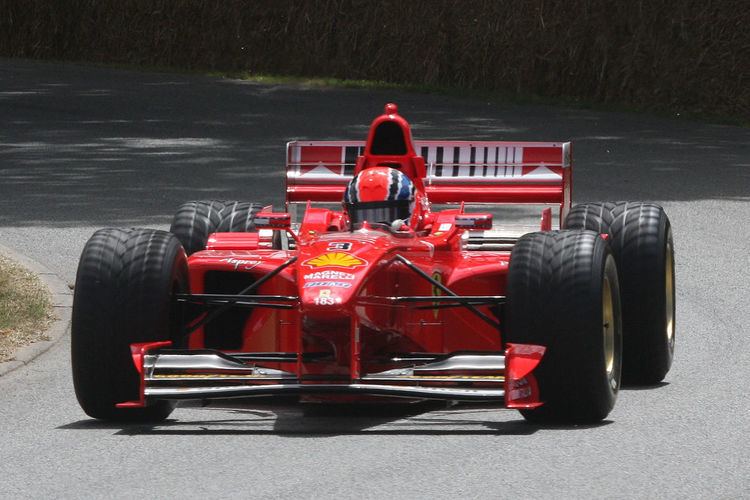Category Formula One Designer(s) Rory Byrne Successor F399 | Constructor Ferrari Predecessor F310B | |
 | ||
Chassis Carbon-fibre and honeycomb composite structure | ||
The Ferrari F300 was a Formula One car designed by Rory Byrne for Scuderia Ferrari Marlboro to use in the 1998 season. It was powered by a 3.0 V10 engine and designed around a narrower track as mandated by the FIA in a series of regulation changes for that season.
Contents
Overview
The Ferrari F300 was a competitive and reliable car, however it was still aerodynamically inferior to the McLaren MP4/13. Despite this, Michael Schumacher battled his way to second place in the world championship behind Mika Häkkinen. Ferrari also finished as runners-up in the Constructors' Championship. The car was an excellent base for the dominance which Ferrari would achieve in the following seasons. Schumacher battled back from a large deficit to be on the same points amount as Häkkinen following his sixth win of the season at Monza, but having been beaten narrowly by Häkkinen at Nürburgring in the penultimate round the championship title was no longer in Schumacher's own destiny. Having stalled the car on the grid in the finale at Suzuka definitely made sure the title was lost, compounded by a puncture following a fightback that might have landed a podium. Even a podium would have been in vain as Häkkinen also won that race. Häkkinen finished with 100 points compared with 86 for Schumacher. Eddie Irvine finished fourth in the championship, being the second-placed finisher in both 1-2's Ferrari scored in France and Italy. Schumacher won six races but Irvine once again did not record a single win. Fourth was his highest championship finish to that date though and he collected many podium finishes over the course of the campaign.
As with all Formula 1 cars, the F300 was heavily and consistently revised during the 1998 season. At the Argentine Grand Prix, a wider front tyre from Goodyear was introduced which significantly improved the handling of the car. "X-wings" were introduced at the San Marino Grand Prix, but were later banned due to safety reasons. A longer wheelbase version of the car was introduced for the German and Belgian Grands Prix and a new spec engine was also designed for the title-deciding Japanese GP. The most significant upgrade to the car, however, was introduced at the Canadian GP, where it received a new diffuser, new rear body panels, a new delta-shaped front wing and top exiting exhausts, the latter of which improved cooling and aerodynamics of the car which was so effective that many other teams copied the design.
Complete Formula One results
(key) (results in bold indicate pole position; results in italics indicate fastest lap)
